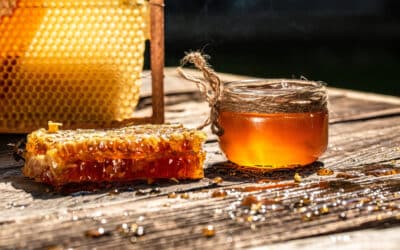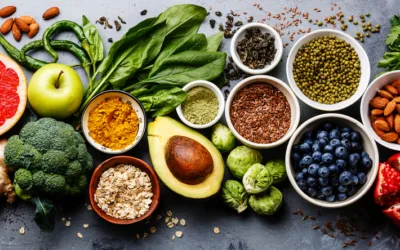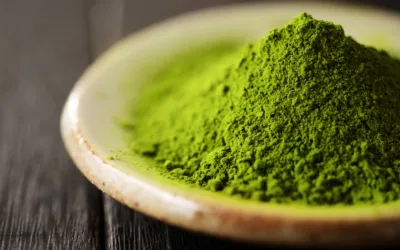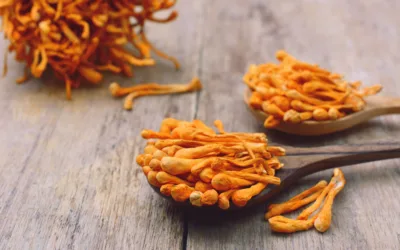How Inflammation Is Quietly Accelerating Your Aging
By Ashley Dew
We often think of inflammation as the body’s natural response to an injury or some form of tissue damage – which is one form. This type of acute inflammation is designed to alert our bodies, eliminate harmful invaders and promote tissue repair. But there is a different, more silent and dangerous type of inflammation that we need to be aware of and proactive about, which is the inflammation that drives disease, and this is called chronic inflammation.

Chronic inflammation is a slower and long-term response that can persist for weeks, months, or even years, often without even knowing it is happening – and often we only find out with a diagnosis of illness or disease. Chronic inflammation is the one thing that ALL diseases have in common.
You were born with a certain genetic makeup and you can think of these genes as little light switches. But just because you may have the gene for Alzheimer’s, doesn’t mean that the gene or ‘switch’ has to be activated or turned on. The key to this is keeping a low level of inflammation in your body because inflammation is the one thing that can flip ‘the switch’. Chronic inflammation has been linked to a variety of health issues, including neurological conditions, autoimmune disorders, cardiovascular disease, and cancer. I, myself, deal with autoimmunity but I am able to control it and stay off medication by keeping the inflammation levels in my body very low because, again, inflammation drives ALL disease.
In the case of a physical injury, immune cells increase blood flow to the affected area, which often causes swelling at the site of injury. Short term, this type of inflammation is good and necessary but when inflammation becomes chronic, this constant state of “war” can cause damage to healthy tissue. This chronic inflammation can also cause accumulation of harmful substances (such as amyloid plaque in the case of Alzheimers for example), which has a negative effect on the body and contributes to age-related diseases.
Inflammation and Aging
As we age, our immune system becomes less efficient at controlling inflammation, leading to a state of chronic low-grade inflammation. Inflammatory lifestyle choices we make pile up on top of this and can cause a constant state of inflammation that can damage tissues and organs, contributing to the aging process and age-related diseases.
More specifically, here are several ways in which this silent, chronic inflammation can contribute to disease and aging:
1. CELLULAR DAMAGE
Chronic inflammation can cause cellular damage over time by increasing oxidative stress and the production of free radicals. Free radicals can damage cells, DNA, and other cellular structures. Oxidative stress also participates in the progression stages of cancer by adding DNA alterations to cell populations.
2. TELOMERE SHORTENING
We need healthy telomeres in order to maintain chromosomal stability and prevent chromosomal degradation. Additionally, telomeres protect the ends of the chromosome from ‘DNA end-joining’ to one another.
3. SENESCENT CELLS
Chronic inflammation can also lead to the accumulation of senescent cells, which are also known as ‘zombie cells’ that have stopped dividing but remain dead in the body. Senescent cells can contribute to aging by promoting inflammation and impairing tissue repair.
4. AGE-RELATED DISEASES
All disease has chronic inflammation at its base, including age-related diseases, such as Alzheimer’s disease, cancer, cardiovascular disease, and type 2 diabetes. These diseases can further contribute to the aging process by causing additional cellular damage and impaired tissue repair.
Inflammaging
There are several major theories about how chronic inflammation affects aging. One of the theories is cleverly termed “inflammaging”. As we age we can become more susceptible to genetic mutations, increased gut permeability, changes in hormonal and microbiota composition, mitochondrial dysfunction, etc. All of these, combined with poor diet, lack of exercise, irregular sleep and other environmental factors pushes our bodies into a state of chronic low-grade inflammation.
Controlling Inflammation
There is increasing interest in studying how reducing inflammation can be used as an anti-aging strategy and how it can contribute to a longer, healthier life. Aging has many dimensions and components and the goal of a lot of modern research is to take inflammation related aging out of the equation.
Here’s what research has shown so far:
- The mechanism for cleaning up harmful products in our body deteriorates with age. Strategies like restricting caloric intake (especially as we become older) have shown to reduce inflammation and activate disposal of these harmful materials in the body.
- As I mentioned before, accumulation of senescent cells is another problem associated with inflammation that supports the aging process. There are supplements and lifestyle choices that support the elimination of accumulating senescent cells.
- Maintaining healthy gut biota is crucial for many reasons. Your gut is the window into your entire system and keeping healthy bacteria alive and thriving in your gut is of utmost importance for a long life, as is keeping inflammatory foods out of it.
Lifestyle factors such as having a clean diet, supplementing the nutrients you aren’t getting through food, getting regular exercise, stress management, and good sleep hygiene can all help to reduce chronic inflammation and support healthy aging.
Some of my top tips for keeping a low level of inflammation are
- Reduce sugar intake / Stop eating sugar completely
- Replace cane/table sugar with honey and maple syrup
- Get rid of all vegetable oils in your life and I mean ALL.
- But get plenty of extra virgin olive oil!
- Read the ingredients on packaged foods to know what you are about to eat! Most all packaged foods are loaded with sugar and vegetable oils – which as stated above – are both highly inflammatory. The reduction of packaged food consumption in your life would already be a giant step towards reducing inflammation.
- Replace refined, white grains with whole grains.
- Get adequate protein intake ( aim for 90 grams a day)!
- Eat 8 richly colored plant foods every day.
- Try to get 20 mins of exercise (light walking counts), five times a week.
- Make sure you are aiming to drink at least 2 liters of water every day.
If doing these things seems completely overwhelming, pick just one and start there. Once you get that dialed in, you can move on to the next. This isn’t a fad diet. It is a lifestyle change and you can take it at a pace that feels comfortable for you.
More from Nutrition
Is Honey a Superfood?
Is Honey a Superfood? Honey has long been used as an ingredient in natural healing remedies. In fact, the earliest reference to honey dates back 8,000 years ago to a cave painting in Spain. Honey has long been used in old folk remedies because it contains a wide...
How To Avoid The Blood Sugar Highs and Lows
How To Balance Blood Sugar Over the Holidays According to the CDC, about 33.9% of adults in the U.S. (that’s more than 84 million people) have pre-diabetes. What’s even more shocking is that only one-third of them know they have it. Many of us don’t think about...
What are polyphenols, and how can they affect your health?
The Magical Power of Polyphenols Polyphenols are magical little compounds found largely in fruits, vegetables, tea, coffee, and cocoa. There are over 8000 polyphenols identified in nature and they are what we know of as antioxidants. They are basically the...
Preserving the Harvest: The Art of Dehydrating Fruits and Vegetables
The Art of Dehydrating Fruits and VegetablesPicture this: vibrant fruits and vegetables bursting with flavor and harvested at the peak of their freshness. Now, imagine savoring those same flavors and nutrients months later, long after the growing season has ended....
The Most Important Vitamin for Your Skin
The Most Important Vitamin for Your SkinThese days there are new cosmetic lines popping up everywhere touting the best new anti-aging technology. With such a flooded market, it is often hard to know which way to turn. Which one works the best? The most expensive one?...
How to Eat for a Long Life
How to Eat for a Long Life If you’ve ever wondered how to eat for longevity, then listen up because I’m going to tell you about what I learned from my education, research, and personal experience eating my way back to health over the past seven years. I was...
Matcha, the Beyonce of Tea
You are either already a matcha aficionado like myself, or else you’ve gotten wind of its magical superpowers. To be honest, its superstar hype should come as no surprise because, quite frankly, matcha can out-twerk any other tea, any day of the week.
Chickpeas, Goats and Wine
Chickpeas, Goats, and Sardinian Cannonau wine When it comes to the Sardinians, genetics, lifestyle and diet come together to create a loooooooong life. Sardinia is in one of the Blue Zones, with the world’s longest living people. There are a few things that factor...
Frankincense and Myrrh
Medicinal Qualities of Frankincense and MyrrhTurns out those three wise men were pretty wise afterall. It wasn’t an uninspired choice to include the two plant oils, frankincense and myrrh, with gold to bring to newborn Jesus. Gold, circa 5 BC, seems reasonable. But...
Adaptogenic Mushrooms
Adaptogenic MushroomsWe all know what a mushroom is, but what makes specific ones adaptogenic? Well, there are certain species that fit a special category of herbs that have medicinal compounds called adaptogens. This means they help your body deal with the negative...










